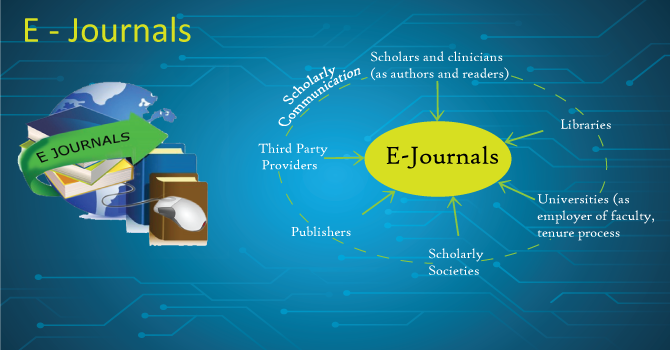
Electronic journals, also known as ejournals, e-journals, and electronic serials, are scholarly journals or intellectual magazines that can be accessed via electronic transmission.
Journals are used when a more recent source is needed for information, and they are subject to extensive peer review processes that can slow them down to the point that some of the information found in them is outdated by the time they are actually published.
What is E-Journal?
A journal is a periodical especially one containing scholarly article and/or disseminating current information on research and development in a particular subject field. If this task is done by an electronic media then it is called as e-journal.
E –journals are known today by different names such as online journals, electronic serials, electronic periodicals, virtual journals and digital serials.
What DTS E-Journal Provides:
DTS E-Journal provides an opportunity for facilitating the participation and encouragement of younger and talented academics.
We provides a possibility for national and global scholarly exchange and contest between law scholars stage for assessment of current legal studies and research and predictable solutions for the upcoming.
We provides a valued resource for educational research institutions, other inter-related institutions and scholars fascinated in keeping abreast of legal studies and research nationally and globally, including:
Original and logical thinking
Existing and new legal studies and development
Law and legal research
Examination of case law
Categories of E-Journals:
Based on the level of content e-journal can be classified as:
a. Scholarly or research e-journal.
b. Popular or general public e-journal.
c. Industry or Trade e-journals.
How it helps:
1. Allows remote access.
2. Can be used simultaneously by more than one user.
3. Provides timely access and at the rate of 24 X 7 X 365 formula.
4. Supports different searching capabilities.
5. Accommodates unique features (e.g. Links to related items, reference linking)
6. Saves physical storage space.
7. Supports multimedia information.